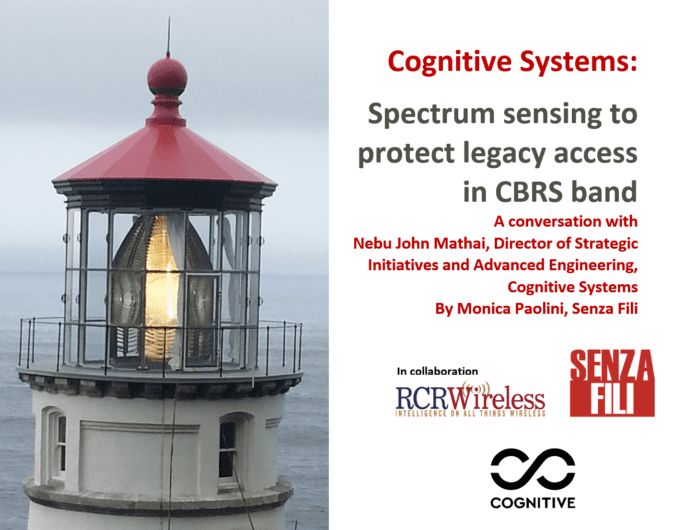A conversation with Nebu John Mathai, PhD, Director of Strategic Initiatives and Advanced Engineering, Cognitive Systems
The below is only a summary. Download a transcript of the complete interview and access the complete report “3.5 GHz: Assessing technology, deployment options and business models” when it publishes on May 9.
A crucial element of success for CBRS is the protection of access to the 3.5 GHz band for legacy users – particularly for military users and along the coast. A pillar of that protection is spectrum sensing. We discussed how CBRS uses spectrum sensing, and how Cognitive Systems approaches it, with Nebu John Mathai, who is the Director of Strategic Initiatives and Advanced Engineering at Cognitive Systems.
CBRS defines an Environmental Sensing Capability function to protect incumbents. “It’s about positively finding the incumbent in a timely manner. The objective in CBRS is to protect the incumbent user, because the incumbent user is the federal government’s naval radars. Since this is strategic spectrum, the bar must be set very high,” told us Nebu. “So the sensor network function in CBRS is not merely spectrum sensing to collect data. Rather, it’s identifying where the incumbent is as expediently as possible, making a very positive identification, and relaying it back to the Spectrum Access System so actions to protect the incumbent user can be taken.”
This topic was further discussed on a webinar with Derek Peterson, CTO of Boingo.
View the complete webinar.


